Tuesday, July 31, 2018
आत्मा, मानिस र आध्यात्मवाद
 आध्यात्मवादका कुराहरु हामी धर्म, धर्मशास्त्र र दर्शनशास्त्रहरुमा पाउने गर्छौं । तर, यो विज्ञानसँग पनि जोडिएको छ । विज्ञानले आत्मालाई मानवमा भएको चेतनाको उच्चतम अवस्थाको रुपमा लिन्छ । पुरातत्वमानवशास्त्र तथा मानवशास्त्रले आधुनिक मानवमा जस्तो उच्च चेतना वा आत्मा नभएका लाखौ वर्ष पुराना मानवपुर्खा प्रजातिहरुको जीवावशेष पत्ता लगाएका छन् । करोड वर्ष अगाडिको कुरा गर्ने हो भने त्यतिखेर पृथ्वीमा मानवको उद्विकास नै भएको थिएन । आत्मा त आधुनिक मानवसँग मात्र भएको कुरो हो । मानव नै नभएको अवस्थाको त्यतिखेरको पृथ्वीमा आत्माको अस्तित्व हुने त कुरै भएन । अर्थात् करोड वा करोडौं वर्ष पहिले यो पृथ्वीको अस्तित्व थियो र यसमा अन्य वनस्पति तथा प्राणीहरु पनि थिए, तर आत्माको अस्तित्व चाहिँ थिएन ।
आध्यात्मवादका कुराहरु हामी धर्म, धर्मशास्त्र र दर्शनशास्त्रहरुमा पाउने गर्छौं । तर, यो विज्ञानसँग पनि जोडिएको छ । विज्ञानले आत्मालाई मानवमा भएको चेतनाको उच्चतम अवस्थाको रुपमा लिन्छ । पुरातत्वमानवशास्त्र तथा मानवशास्त्रले आधुनिक मानवमा जस्तो उच्च चेतना वा आत्मा नभएका लाखौ वर्ष पुराना मानवपुर्खा प्रजातिहरुको जीवावशेष पत्ता लगाएका छन् । करोड वर्ष अगाडिको कुरा गर्ने हो भने त्यतिखेर पृथ्वीमा मानवको उद्विकास नै भएको थिएन । आत्मा त आधुनिक मानवसँग मात्र भएको कुरो हो । मानव नै नभएको अवस्थाको त्यतिखेरको पृथ्वीमा आत्माको अस्तित्व हुने त कुरै भएन । अर्थात् करोड वा करोडौं वर्ष पहिले यो पृथ्वीको अस्तित्व थियो र यसमा अन्य वनस्पति तथा प्राणीहरु पनि थिए, तर आत्माको अस्तित्व चाहिँ थिएन ।
वर्तमान समयमा जान्नेसुन्ने मार्क्सवादीहरु आध्यात्मवादी भन्दा बढी भौतिकवादी भनेर आफूलाई चिनाउन चाहन्छन् । तर, तिनीहरुमध्ये धेरैलाई के लाग्न सक्छ भने आत्माको अस्तित्वको कुरा गर्नासाथ आध्यात्मवादी होइन्छ । त्यसैले आत्माको कुरै नगरौं, सबै कुरा भौतिक पदार्थसँग गाँसिएका हुन्छन्, त्यसैको मात्र कुरा गरौं भन्ने उनीहरुको आग्रह हुन्छ । तर, नगरौं भन्दाभन्दै पनि हरेक क्षणमा आत्माको कुरा अगाडि आइहाल्छ । म, तिमी, तपाईं, उनी, तिनी सबैको पहिचान आत्माले नै गरेको हुन्छ । त्यस्तै मेरो, तिम्रो, तपाईंको, उनको, तिनको आदि सबैमा आत्माले नै काम गरेको हुन्छ । रुचि, अरुचि, माया, ममता, पे्रम, घृणा, रीस, राग, इष्र्या सबैमा पनि आत्माले नै काम गरेको हुन्छ । त्यसैले भौतिकवादीले जति नै पन्छाउन खोजे पनि उसलाई आत्माको कुरोले कहिल्यै छोड्दैन । मान्छे जहाँ गए पनि आत्माको कुरो ऊसँगै टाँसिएर आएको हुन्छ ।
त्यसो भए आत्माको अस्तित्वको वास्तविकता के हो त ? जहाँ गए पनि आत्माको कुरोले मान्छेलाई नछोड्नुको अर्थ आत्माको अस्तित्व बकाइदाका साथ छ । कसैले नमान्दैमा त्यसको अस्तित्व नहुने हो र ? अनि वास्तवमा आत्मा नै मान्छेको अलगअलग पहिचानको आधार हो । अलगअलग आत्माको कारणले नै म, तिमी, तपाईं र हजुर, उनी र तिनी भन्ने भावना मान्छेमा हुने हो । त्यसैले आत्माको अस्तित्व बिना मान्छेको पनि अस्तित्व हुँदैन । तर, आत्माको अस्तित्वको कुरो गर्दैमा आध्यात्मवादी होईंदैन ।
अपवादमा बाहेक सबै मान्छे मृत्युसँग डराउँछन् । सबैलाई थाहा छ, जति नै डराए पनि र जति नै नचाहे पनि एक दिन जो कोहीको पनि मृत्यु त हुन्छ नै । मृत्यु हुँदा मान्छेको शरीर ज्युँकात्युँ रहिरहन्छ । खालि त्यो शरीर चलायमान नभई ढुङ्गाझैं स्थिर हुन पुग्छ । त्यस्तो स्थिति त मुर्छामा पनि हुन्छ नि । तर, मुर्छित मान्छे पछि त्यस अवस्थाबाट पार गरी पुनः चलायमान हुन सक्छ । मृत्यु भइसकेपछि भने मान्छे पुनः ब्युँझिएर आउने सम्भावना शतप्रतिशत रहँदैन । किन ? किनकि, त्यो शरीरमा सम्पूर्ण जीवकोषभित्रको जैविक प्रक्रिया बन्द भइसकेको हुन्छ । त्यस अवस्थामा पुगिसकेपछि शरीरभित्रको कुनै पनि जीवकोषमा पुनः जैविक प्रक्रिया सुरु हुन सक्दैन । वास्तवमा मृत्यु त्यही नै हो । त्यसैले मृत्यु भइसकेपछिको शरीरलाई शरीर नभनी शव भनिन्छ । मृत्यु भएपछि शरीर त मर्यो, आत्मा कहाँ गयो नि ?
हो, यही प्रश्नको उत्तर दिने क्रममा आध्यात्मवाद र भौतिकवादमा भेद छुट्टिन्छ । यही प्रश्नको उत्तर दिने क्रममा आदर्शवाद र विज्ञानमा फरक हुन्छ ।
मान्छेको मृत्यु भएपछि आत्मा कहाँ गयो ? भन्ने प्रश्नमै आध्यात्मवाद लुकेको छ । आत्मा कहिँबाट आएकै होइन । त्यसैले त्यो कहिँ जाने कुरै भएन । त्यो कहिँबाट आउँदैन पनि, कहिँ जाँदैन पनि । त्यो जिउँदो शरीरमा विकसित हुन्छ र मृत्यु हुँदा शरीरसँगै त्यसको पनि समाप्त हुन्छ । यानी कि त्यसको छुट्टै स्वतन्त्र अस्तित्व हुँदैन । आत्माको अस्तित्व हुन्छ, तर अलग अस्तित्व हुँदैन । हाम्रो शरीरले आत्मा विकासको क्षमता बोकेको हुन्छ । यहाँ शरीर भन्नाले शरीरका अरु अङ्ग नभई मस्तिष्क भन्ने बुझ्नुपर्दछ । चेतना, बुद्धि, मन, भावना आदि सबै आत्मासँग जोडिएका कुराहरु हुन् । आत्मा मस्तिष्कसँग जोडिएको कुरो हो ।
मस्तिष्क जनावरमा पनि हुन्छ । तर, उनीहरुको मस्तिष्कको विकास मानव जातिको स्तरमा भएको हुँदैन । जनावर र मानवको मस्तिष्क क्षमतामा मुख्य फरक भनेको नै अघिल्लोले सिर्जना र तर्क गर्न सक्दैन तर पछिल्लोले सक्छ । जनावरमा भावना हुँदैन, मानवमा हुन्छ । यो भनेको जनावर र मानवको मस्तिष्क क्षमतामा भएको फरकपना हो ।
भावनाले आफू र अरुमा भिन्न देखाउँछ । र, यसबाट नै ‘म’ को अनुभूति हुन्छ । ‘म’ को अनुभूति नै आत्मा हो । त्यसैले आत्मा भनेको मानवमा मस्तिष्क विकासको क्रममा सिर्जित संवेग र चेतनाकै विकसित रुप हो । अर्थात्, यो मानवमा भौतिक शरीरको विकासको क्रममा सिर्जित र विकसित विशिष्ट गुण हो । आत्मा मानवको भौतिक शरीरको विकासको उपज भए पनि यो यति विकसित छ कि यसले आफूलाई भौतिक शरीरभन्दा स्वतन्त्र देख्दछ । तर, यथार्थमा आत्मा कहिल्यै भौतिक शरीरबाट अलग र स्वतन्त्र हुन सक्दैन । आधुनिक प्रविधिको उदाहरण दिने हो भने मानवको भौतिक शरीर भनेको कम्प्युटरको हार्डवेयर हो र आत्मा चाहिँ सफ्टवेयर । सफ्टवेयर जति नै क्षमताको भए पनि हार्डवेयर बिना त्यसको कुनै अस्तित्व हुन्न । त्यस्तै जिउँदो मानव शरीर बिना आत्माको अस्तित्व हुँदैन ।
भावनाले आफू र अरुमा भिन्न देखाउँछ । र, यसबाट नै ‘म’ को अनुभूति हुन्छ । ‘म’ को अनुभूति नै आत्मा हो । त्यसैले आत्मा भनेको मानवमा मस्तिष्क विकासको क्रममा सिर्जित संवेग र चेतनाकै विकसित रुप हो । अर्थात्, यो मानवमा भौतिक शरीरको विकासको क्रममा सिर्जित र विकसित विशिष्ट गुण हो । आत्मा मानवको भौतिक शरीरको विकासको उपज भए पनि यो यति विकसित छ कि यसले आफूलाई भौतिक शरीरभन्दा स्वतन्त्र देख्दछ । तर, यथार्थमा आत्मा कहिल्यै भौतिक शरीरबाट अलग र स्वतन्त्र हुन सक्दैन । आधुनिक प्रविधिको उदाहरण दिने हो भने मानवको भौतिक शरीर भनेको कम्प्युटरको हार्डवेयर हो र आत्मा चाहिँ सफ्टवेयर । सफ्टवेयर जति नै क्षमताको भए पनि हार्डवेयर बिना त्यसको कुनै अस्तित्व हुन्न । त्यस्तै जिउँदो मानव शरीर बिना आत्माको अस्तित्व हुँदैन ।
Thursday, July 12, 2018
the time machine
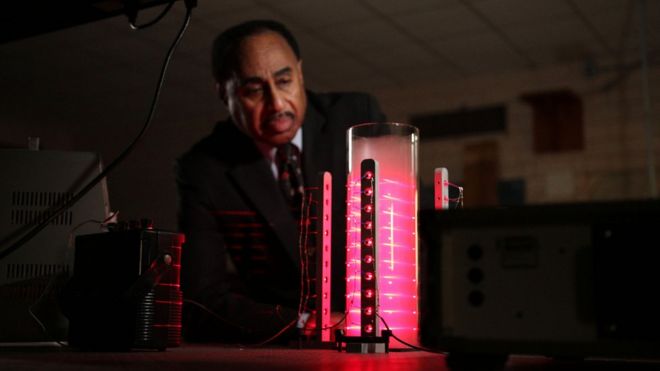 Photo copy rights BBC / Thomas Shayl
Photo copy rights BBC / Thomas Shayl
Traveling during the time may be a fancy flute, but some physicians may think that it might be possible. BBC Harrison looked at the most promising ideas to open this stick in reality of science fiction.
Ron Mallett is a dream: she wants to travel in time.
It's not just imagination - a respected professor of Mallet Physics.
"I want to think myself as an ordinary person with an passion, and my passion is the time to travel time," she says.
Pro Mallet wanted to make a time machine for most of his life. Everything he tells about, he can be found in the early danger of his life.
Ron's father, a heavy smoker, died from a heart attack at the age of 33- when Pro Mallet was just 10 years old. Ron became destroyed and took back his books.
"After a year when I was 11 years old, I came to the book that all changed for me. It was time time," by H. J. Wells, " said the Horizone Program of BBC, Connecticut Physics University .
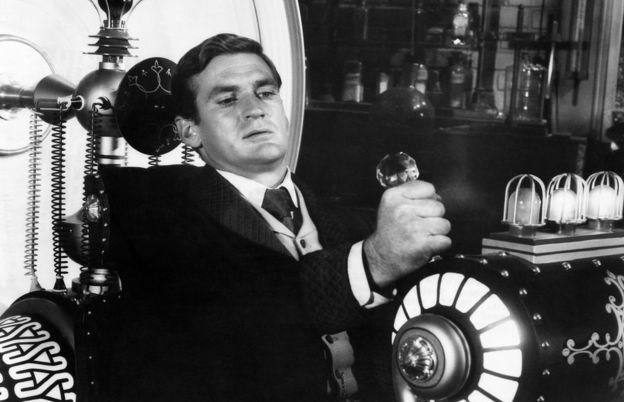 Image copy rights GETTY IMAGES
Image copy rights GETTY IMAGES
"कवर मेरो ध्यान पकियो, तर जब यो भित्र पढ्यो, र यो थियो:" वैज्ञानिक मान्छे राम्रो तरिकाले जान्दछ कि त्यो समय केवल एक प्रकारको ठाउँ हो र हामी अगाडी बढ्न र पछि फर्केर जाँदैछौं, जस्तै हामी ... स्पेसमा '।
"मैले पढेको बेला मैले यसो भने: 'यो अद्भुत छ!'"
प्रो Mallett यसो भन्छ: "यदि म एक समय मेसिन बनाउन सक्छु, म अतीतमा जान सक्दिन र मेरो बुबालाई फेरि देख्न सक्छु र सायद आफ्नो जीवन बचाउन र सबै चीजहरू बदल्न सक्दिन।"

समय यात्रा धेरै फटाउन सक्छ, तर वैज्ञानिकहरू पहिले नै प्रकृतिको धेरै रहस्य खोजिरहेका छन् जुन दिनको दिन रॉनको सपना पूरा भयो।
अल्बर्ट आइंस्टीन ले सोचे कि स्पेस को तीन आयामहरु समय संग जोडिएको थियो - जो चौथी आयाम को रूपमा कार्य गर्दछ। उनले यो प्रणाली स्पेस-टाइम भनिन्, र यो ब्रह्मांडको मोडेल हो जुन आज हामी प्रयोग गर्दछौं।
तर आइन्स्टीनले पनि सोचेको थियो कि यो "स्पेस" सिर्जना गरी अन्तरिक्ष-समयको युद्ध गर्न थाल्दछ। यो घटना को एक वार्महोल भनिन्छ, र यो दुई सुन्दरीको साथ एक सुरंगको रुपमा कल्पना गर्न सकिन्छ, प्रत्येक उद्घाटन स्पेस-टाइममा विभिन्न बिन्दुहरूमा।
Wormholes प्राकृतिक रूप देखि ब्रह्मांड मा हुन सक्छ; वास्तवमा, रूसमा वैज्ञानिकहरूले तिनीहरूलाई पत्ता लगाउन रेडियो टेलिबकोप प्रयोग गर्न खोजिरहेका छन्। तर समय यात्राको लागि wormholes प्रयोग सरल हुनेछैन।
- 'सर डेविड एटेनबो' जहाज ठूलो स्प्लैशको लागि तयार छ
- 'राक्षस' बर्ग: अर्को के भयो?
- भूकम्प पहिचान टेक्नोलोजीमा क्रांति
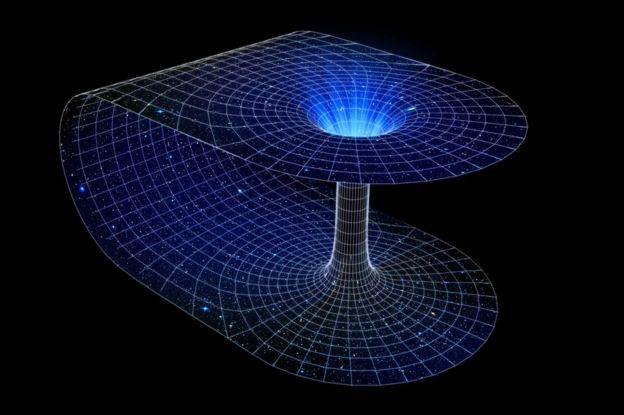 तस्बिर प्रतिलिपि अधिकारALAMY
तस्बिर प्रतिलिपि अधिकारALAMY
नजिकका व्यक्तिहरू धेरै प्रकाश-वर्ष टाढा हुन सक्थे। र यदि तपाईं तिनीहरूलाई प्राप्त गर्न सक्नुहुनेछ र त्यसपछि तिनीहरूका माध्यमबाट यात्रामा बाँच्न सक्नुहुनेछ भने त्यहाँ कुनै ग्यारेन्टी छैन जहाँ तपाईं अन्त्य गर्नुहुनेछ।
तर केही फिजिसिस्टहरूले बताएका छन् कि हामी भविष्यमा केहि बिंदुमा bespoke wormholes अप्ठेरो गर्न सक्षम हुन सक्छ - यद्यपि हामी अहिले कुनै कसरी थाहा छैन।
भौतिकीहरूले पनि भविष्यवाणी गर्छ कि क्यान्सरहरूले बिस्तारै बिस्तारै बसाल्नुपरेको छ, जुन जुनसुकै भित्रभित्रै छ। यदि एक टाइम मेशिन कहिल्यै उनलाई शोषण गर्न हो भने, हामीले यो असुविधाजनक सुविधा रोक्नको लागि बाटो खोज्नुपर्छ।
गाढा ऊर्जाको रहस्यमय घटनाले समाधान प्रदान गर्न सक्छ। 1 99 0 को दशकमा, खगोलशास्त्रीहरूले पत्ता लगाएका थिए कि ब्रह्मांडको विस्तारले गति बढेको थियो, यसको सट्टामा ढिलो हुन सकेन।
"त्यहाँ एउटा 'गुरुत्वाकर्षण' प्रभाव रहेको छ - यो खींचेर बिरुद्ध धक्का छ। हामी थाहा छैन कि यो के हो, तर यसले ब्रह्माण्ड को सबै भन्दा माथि बनाउँछ। हामी यसलाई अन्धकार ऊर्जा भन्छौं," प्रम तामरा डेविस भन्छन्, अष्ट्रेलियामा क्वीन्सल्याण्ड विश्वविद्यालयमा एक ब्रह्मांडोलोजिस्ट ।
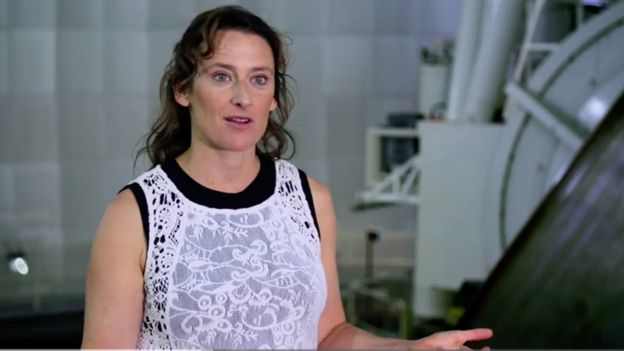
एक वर्र्महोल केवल समय यात्राको लागि काम गर्नेछ यदि यसको "मुख" लामो समयसम्म खुला रहन सकिन्छ जसले यसलाई केहि माध्यमबाट यात्रा गर्न अनुमति दिन्छ। यसले नकारात्मक ऊर्जा भनिन्छ जुन चाहिन्छ, वास्तवमा रोजगारीको संसारमा अवस्थित छैन।
तर ब्रह्माण्ड ऊर्जा ब्रिजमा बिरुवा बनाउँछ - यदि हामी यो के थाहा पाउन सक्दछौं, हामी एक लामो अन्तमा र अर्को बाहिर जानको लागी एक भर्महोल खोल्न सक्षम पार्न सक्दछ।
"हामी थाहा छैन कि हामी एक wormhole बनाउन सक्षम छन्, कि यो हाम्रो क्षमताओं को भित्र तकनीकी रूप मा छ कि ... तर कसलाई थाह छ भविष्य भविष्यमा सभ्यता के गर्न सक्षम छ," प्रोफेस डेविस भन्छन्।
"प्राविधिकले यति छिटो उन्नत भएको छ कि सम्भवतः अन्तरिक्ष र समय आफैंले हाम्रो नियन्त्रणमा ल्याउन सक्ने कुरा हो।"
Wormholes भौतिकी को अधिक सट्टा अन्त मा अवस्थित छ, समय मा यात्रा को लागि एक दृष्टिकोण प्रदान। तर Ron Mallett अर्को छ।
उहाँले एक वास्तविक समय मिसिन को लागि योजनाहरु लाई तैयार गरेको छ, र उनको अवधारणा एक पुस्तक द्वारा प्रेरित भएको थियो जो उनले 12 वर्ष को उमेर मा अल्बर्ट आइंस्टीन को समीकरण को बारे मा पढे।
प्रो माल्लेटले टेबल-माथि यन्त्र बनाएको छ जसले सिद्धान्तहरू विचार गर्दछ जुन वास्तविक, काम गर्ने टाइम मेसिन निर्माण गर्न प्रयोग गर्न सकिन्छ। पहिलो, लेजरहरू प्रकाशको घर्षण बीम उत्पन्न गर्न प्रयोग गरिन्छ। यस "रिंग लेजर" भित्रको खाली स्थानमा "मुटुको कफी कपाल झिकेर" मुटाइन्छ, जो कि कनेक्टिकट प्रोफेसरले बताउँछ।
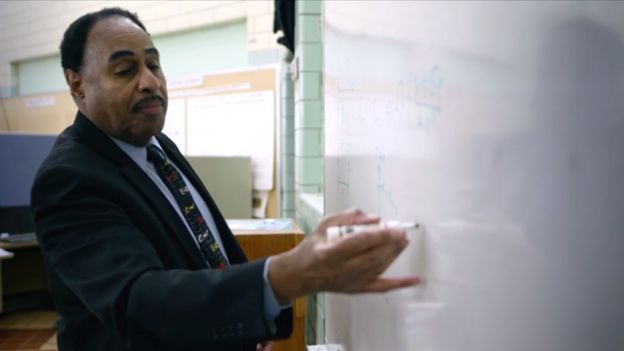
किनकि स्पेस र समय आन्तरिक रूपमा जोडिएको छ, युद्धको ठाउँ पनि युद्धप्राय हुनुपर्छ। प्रो Mallett को सैद्धांतिक कार्यले देखाउँछ कि, पर्याप्त लेजर तीव्रतालाई एकदम सानो ठाउँमा दिईयो, सामान्यतया रैखिक टाइमलाइन परिवर्तन गर्न सम्भव छ जुन हाम्रो सबै निवासी हुन्छ।
"यदि ठाउँ अन्तरिक्ष ठिकै छ, यदि यो रैखिक समयरेखा एक पाशमा घुम्न जानेछ भने। यदि अचानक सबै एक पाशमा घुमाईन्छ जसले हामीलाई अतीतमा यात्राको सम्भावना दिन्छ।"
तथापि, यो काम गर्न को लागि, अवधारणा को विशाल मात्रा को आवश्यकता हुनेछ र एक माइक्रोस्कोपी स्तर मा सबै केहि सिकन को तरीका हुनेछ।
तर एकपटक हाम्रो टाइम टाइम मेसिनमा, यसलाई सफलतापूर्वक प्रयोग गरेर समयको विस्तृत बुझाइलाई आवश्यक पर्दछ।
साधारणतया स्वीकार्य दृष्टिकोण यो ब्रह्मा स्पेस-टाइमको अपरिवर्तित "ब्लक" हो। यो विचारले आइस्स्टीनको समीकरणबाट सीधा उत्पन्न हुन्छ।
"मोडेलको बारे के महत्त्वपूर्ण छ यो विचार भनेको अतीत, वर्तमान र भविष्य सबै समान रूपमा वास्तविक हो। त्यसैले तपाईले अवस्थित सबै चीजहरू सोच्न सक्नुहुन्छ, अवस्थित छ वा स्पेस-टाइममा सबै जसरी त्यहाँ त्यहाँ अवस्थित हुनेछ" भन्नुहुन्छ अष्ट्रेलियाका सिडनी विश्वविद्यालयको समय-समयमा केन्द्रका निर्देशक क्रिस्टी मिलर ।
"डायनासोरहरू त्यहाँ सबै भन्दा टाढा विगतका डायनासोर सामानहरू छन्, हामी अहिले सबै यहाँ छौं र सबै भविष्य त्यहाँ स्पेस-टाइम पनि हुन्छ।"
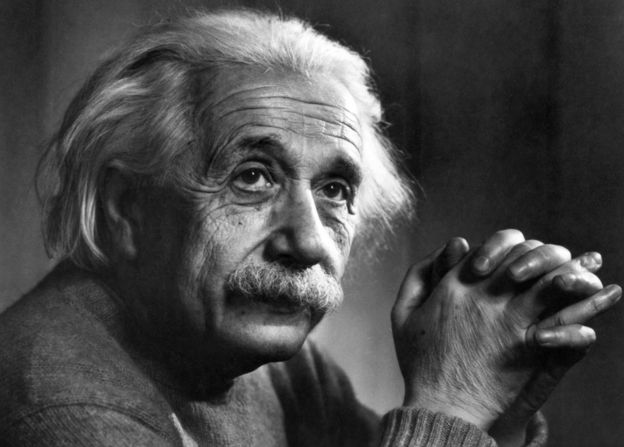 तस्बिर प्रतिलिपि अधिकारSPL
तस्बिर प्रतिलिपि अधिकारSPL
ब्लक मोडल हेर्नको लागि एक तरिका अन्तरिक्ष ठाउँमा अन्य ठाउँहरू जस्तै समय मा अन्य स्थानहरु लाई सोच्नु हो: "हामी यहाँ सिडनीमा छौं, तर सिंगापुर र लन्डनमा अन्य स्थानहरू छन्। यी स्थानहरू एकदम सही हो, यो मात्र हो हामी तिनीहरूलाई छैनौं "डा। मिलर भन्छन्।
यो उडान समय यात्रीको लागि सुसमाचार हो, किनकी यसले सुझाव दिन्छ कि हामी किन बदल्नबाट रोक्न को लागी केहि स्थान र समयको लागी हो।
तर, महत्त्वपूर्ण कुरा, यसले पनि विगतमा, वर्तमान र भविष्य पहिले देखि नै लेखिएको छ, यो हो भने, यदि हामी समय समयमा यात्रा गर्न थाल्छौं, हामी यसलाई बदल्न सक्षम छैनौं। कुनै उद्धृत उदाहरण लिनको लागी, हामी कसैको हजुरआमाधमलाई मार्न सक्षम हुनु हुँदैन ताकि भविष्यमा भविष्यका विरूद्ध विद्यमान रहनेछ।
ब्लक मोडेलले हाम्रो दैनिक अवधारणालाई व्यवहारको रूपमा व्यवहार गर्दछ, एक तरिकाले मानिसलाई वास्तविकताको तर्कसंगत बनाउँछ। तर प्रोफेसर ली स्मिल्लिन , क्यानाडा , वाटरलो, क्यानाडामा पेरिमेट इन्स्टीट्युटबाट सहमत हुनुहुन्न। उनको विश्वास छ कि समय को पारित एक वास्तविक र मौलिक घटना हो।
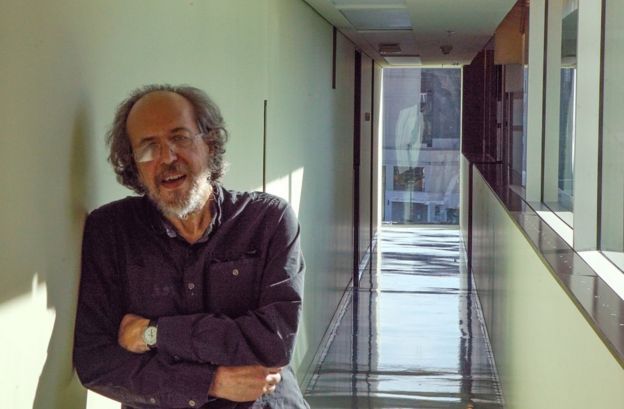 छवि प्रतिलिपि अधिकारबीबीसी / यूरोपीय संघ स्मिथ
छवि प्रतिलिपि अधिकारबीबीसी / यूरोपीय संघ स्मिथ
"समय यात्रा सम्भवतः असम्भव छ," उनी भन्छन्। "यदि वर्तमान के हो वास्तविक छ र अतीत मात्र यो अर्थमा वास्तविक हो कि वर्तमान मा सम्झना र रेकर्डहरू छन् र भविष्य अझै पनि अस्तित्वमा छ ... त्यहाँ जाने ठाउँ छैन।"
पेरिमिटर इन्स्टीट्यूटका निर्देशक, उनका साथी प्रोफिलर नील टरोोकले सोचेका छन् कि क्वाणम भौतिकीको अजीब संसार यस प्रश्नको जवाफ दिन महत्त्वपूर्ण हुन सक्छ।
फिजिक्स को यो क्षेत्र धेरै साना तराजूहरुमा फैलिएको छ, जहाँ हाम्रो स्कूल पाठ्यपुस्तक मा हामीले क्लासिकल भौतिकी को नियमहरु लाई तोड्यो। उदाहरणका लागि, क्वांटम संसारमा, यो कणको लागि एकैछिनमा धेरै ठाउँहरूमा सम्भव हुन सक्छ।
"मलाई लाग््छ कि यो मलाई स्पष्ट छ कि हामी केहि सम्भावना हामी समय मा फिर्ता जाँदैछौं," उनले भन्छन्। "क्वांटम भौतिकीमा, केही असंभव छैन - कणहरू पर्खालहरू मार्फत यात्रा गर्छन्!"
Pro Torok states that because of a far-reached hope of time travel, "no one really has any idea how to pursue time". But he says: "Never have to say, because some clever people will come together and tell you how to break the rules."
Wednesday, July 11, 2018
The time travel machine
- Share this with Facebook Share this with Messenger
- Share this with Twitter
- Share this with Email
 Image copyrightBBC / THOMAS SCHEIDL
Image copyrightBBC / THOMAS SCHEIDL
Travelling in time might sound like a flight of fancy, but some physicists think it might really be possible. BBC Horizon looked at some of the most promising ideas for turning this staple of science fiction into reality.
Ron Mallett has a dream: He wants to travel in time.
This isn't mere fantasy - Mallett is a respected professor of physics.
"I think of myself as being an ordinary person with a passion, and my passion is the possibility of time travel," he says.
Prof Mallett has wanted to build a time machine for most of his life. His passion, he explains, can be traced to a tragic event early in his life.
Ron's father, a heavy smoker, died of a heart attack at the age of 33 - when Prof Mallett was just 10 years of age. Ron was devastated and withdrew into his books.
"A year after that when I was 11, I came across the book that changed everything for me. That was The Time Machine, by HG Wells," the University of Connecticutphysicist told the BBC's Horizon programme.
 Image copyrightGETTY IMAGES
Image copyrightGETTY IMAGES
"The cover caught my attention, but it was when I read the inside, and it said: 'Scientific people know very well that time is just a kind of space and that we can move forward and backwards in time, just as we can… in space'.
"When I read that I said: 'This is wonderful!'."
Prof Mallett explains: "If I could build a time machine, then I could go back into the past and see my father again and maybe save his life and change everything."

Time travel may sound far-fetched, but scientists are already exploring several mysteries of nature that could one day see Ron's dream fulfilled.
Albert Einstein thought the three dimensions of space were linked to time - which serves as a fourth dimension. He called this system space-time, and it's the model of the Universe that we use today.
But Einstein also thought it was possible to warp space-time, creating a "bridge". This phenomenon is called a wormhole, and it can be visualised as a tunnel with two ends, each opening into different points in space-time.
Wormholes might exist naturally in the cosmos; indeed, scientists in Russia are trying to use radio telescopes to detect them. But using wormholes for time travel won't be straightforward.
- 'Sir David Attenborough' ship ready for big splash
- The 'monster' berg: What happened next?
- Revolution in quake detection technology
 Image copyrightALAMY
Image copyrightALAMY
The nearest ones could be many light-years away. And even if you could get to them and then survive the journey through them, there's no guarantee where you'd end up.
But some physicists have speculated that we might be able to conjure up bespoke wormholes at some point in the future - though we currently have no idea how.
Physics also predicts that wormholes would have a habit of collapsing, crushing whatever's inside them. If a time machine is ever to exploit them, we'd have to find a way to stop this inconvenient feature.
The mysterious phenomenon of dark energy might provide a solution. In the 1990s, astronomers found that the expansion of the Universe was speeding up, rather than slowing down as might have been expected.
"Something out there is having an 'anti-gravity' effect - it's pushing rather than pulling. We don't know what that is, but it makes up most of the Universe. We call it dark energy," says Prof Tamara Davis, a cosmologist at the University of Queensland in Australia.

A wormhole will only work for time travel if its "mouth" can be held open for long enough that it allows something to travel through it. That requires something called negative energy, which doesn't really exist in the everyday world.
But the dark energy that permeates the cosmos fits the bill - if we can figure out what it is, we might be able to prop open a wormhole long enough to go in one end and out the other.
"We don't know whether we are able to make a wormhole, whether that's technically within our capabilities… But who knows what a future human civilization is going to be able to do," says Prof Davis.
"Technology has advanced so rapidly that maybe space and time themselves are something that can come under our control."
Wormholes exist at the more speculative end of physics, offering one approach to travelling in time. But Ron Mallett has another.
He has drawn up plans for an actual time machine, and his concept was inspired by a book he read at age 12 about Albert Einstein's equations.
Prof Mallett has built a table-top device that illustrates principles he thinks could be used to build a real, working time machine. First, lasers are used to generate a circulating beam of light. The space inside this "ring laser" should become twisted, "like stirring a cup of coffee", the University of Connecticut professor explains.

Because space and time are intimately connected, warping space should also warp time. Prof Mallett's theoretical work has shown that, given enough laser intensity in a small enough space, it should be possible to alter the normally linear timeline we all inhabit.
"If space is being twisted strongly enough, this linear timeline is going to be twisted into a loop. If time all of a sudden is twisted into a loop that allows us the possibility of travelling into the past," says Ron Mallett.
However, in order to make it work, the concept would require vast amounts of power and a way of shrinking everything to a microscopic scale.
But once we have a time machine, using it successfully will require a detailed understanding of time itself.
The generally accepted view is that the Universe is an unchanging "block" of space-time; this idea arises directly from Einstein's equations.
"What's important about the model is the idea that the past, present and future are all equally real. So you can think of everything that ever did exist, does exist or will exist as all somehow being out there in space-time," says Dr Kristie Miller, director of the Centre for Time at the University of Sydney, Australia.
"The dinosaurs are all out there somewhere in the past doing dinosaur stuff, we're all here now and all of the future is out there somewhere in space-time too."
 Image copyrightSPL
Image copyrightSPL
One way to visualise the block model is to think of other places in time as being like other places in space: "We are here in Sydney, but there are other people located in Singapore and London. Those places are perfectly real, it's just that we aren't at them," says Dr Miller.
This is good news for the budding time traveller, because it suggests there is nothing to stop us from swapping where we are now for some other place and time.
But, importantly, it also implies that the past, present and the future are already written, so that if we were to travel back in time, we wouldn't be able to alter it. To take an oft-quoted example, we shouldn't be able to kill someone's grandparent so that their descendant will cease to exist in the future.
The block model treats our everyday concept of time as an illusion, a way that humans rationalise reality. But Prof Lee Smolin, from the Perimeter Institute in Waterloo, Canada, disagrees. He believes that the passage of time is a real and fundamental phenomenon.
 Image copyrightBBC / EUAN SMITH
Image copyrightBBC / EUAN SMITH
"Time travel is probably impossible," he says. "If what's real is the present moment and the past is only real in the sense that there are memories and records of it in the present, and the future is still to exist… there's nowhere to go."
His colleague Prof Neil Turok, director of the Perimeter Institute, thinks the weird world of quantum physics could be crucial to answering this question.
This area of physics emerges at very small scales, where the rules of classical physics we learnt about in our school textbooks break down. For example, in the quantum world, it might be possible for a particle to be in many places at once.
"I think it's clear to me that there is some probability of us going backwards in time," he says. "In quantum physics, nothing is impossible - particles travel through walls!"
Prof Turok explains that time travel remains a distant hope because "no one really has any plausible idea of how to go backwards in time right now". But he adds: "One should never say never, because some clever person will come along and tell you how to break the rule."
Subscribe to:
Posts (Atom)